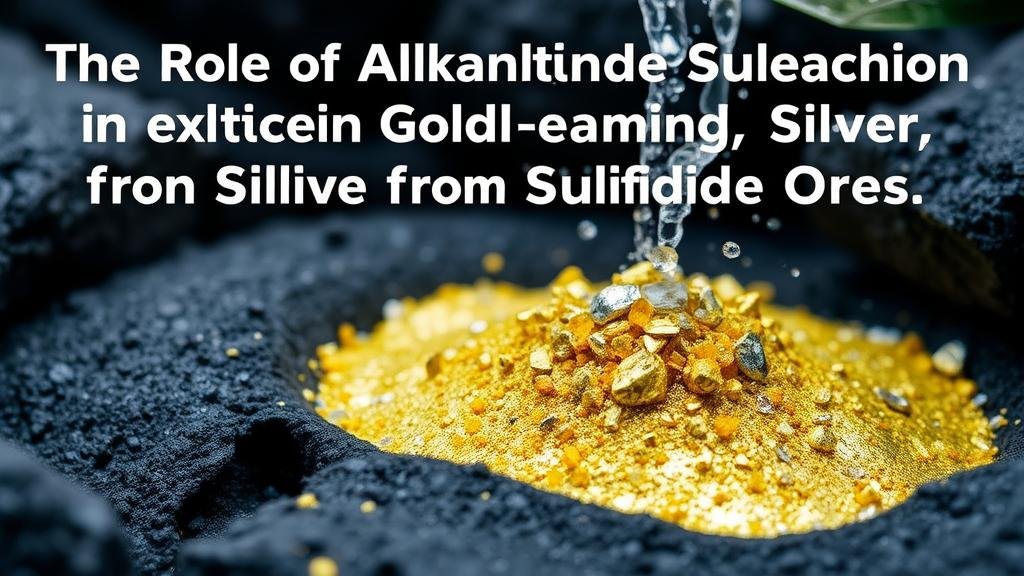The Role of Alkaline Sulfide Leaching in Extracting Gold and Silver From Sulfide Ores
The Role of Alkaline Sulfide Leaching in Extracting Gold and Silver From Sulfide Ores
Gold and silver extraction from sulfide ores poses unique challenges due to the inherent properties of these metals when bound in mineral matrices. One of the advanced techniques employed to address these challenges is alkaline sulfide leaching. This method not only enhances metal recovery rates but also aligns with growing environmental sustainability standards in the mining sector.
Understanding Sulfide Ores
Sulfide ores are an important category of precious metal deposits that typically contain gold and silver in sulfide minerals like chalcopyrite, galena, and pyrite. presence of these sulfides complicates the leaching process, as conventional methods, such as cyanidation, are often inefficient due to the formation of passivation layers that inhibit metal dissolution.
The Alkaline Sulfide Leaching Process
Alkaline sulfide leaching involves the use of a sodium sulfide (Na2S) solution under alkaline conditions, generally in a pH range of 9-11. This environment supports the dissolution of gold and silver as soluble thiocomplexes, enhancing the extraction efficiency. The general reaction can be simplified as follows:
- For gold: 2 Au + 2 Na2S + 4 NaOH → 2 Na3Au(S2) + 2 H2O
- For silver: 4 Ag + 2 Na2S + 2 NaOH → 2 Na3Ag(S2) + 2 H2O
This technique leverages the unique chemistry of sulfide ions to effectively solubilize precious metals, making it particularly advantageous when dealing with complex ores.
Advantages of Alkaline Sulfide Leaching
Several advantages make alkaline sulfide leaching a compelling option in precious metal recovery:
- Higher Recovery Rates: Studies have shown that alkaline sulfide leaching can achieve gold recoveries exceeding 95%, especially from complex sulfide ores.
- Lower Environmental Impact: Compared to cyanide leaching, this method presents a lower environmental risk, as sodium sulfide is less toxic than cyanide compounds.
- Versatility: This method works effectively with a variety of sulfide minerals, allowing its use across different types of deposits.
Case Studies and Real-World Applications
A notable example of alkaline sulfide leaching in action is the process used at the Merian gold mine in Suriname, where the technique has been integrated into their processing workflow to optimize gold recovery from complex sulfide deposits. operational results indicated a significant increase in recovery rates compared to traditional methods.
Similarly, research conducted by the Colorado School of Mines highlighted the effectiveness of this method on high-arsenic gold-silver ores, demonstrating a viable solution to issues that commonly plague the treatment of these difficult ore types.
Limitations and Considerations
Despite its advantages, there are several limitations and considerations when implementing alkaline sulfide leaching:
- Cost and Infrastructure: The setup and operational costs for implementing alkaline sulfide leaching can be high, particularly for small-scale miners.
- Process Complexity: The process requires careful control of pH and sulfide concentration, necessitating skilled operators and robust monitoring systems.
- Potential Sulfide Wastes: The by-products of sulfide leaching require appropriate management to avoid additional environmental impacts.
Conclusion and Future Directions
Alkaline sulfide leaching represents a promising technique for the extraction of gold and silver from sulfide ores, particularly as the mining industry continues to pursue methods that are both economically viable and environmentally responsible. With ongoing research and advancements in technology, this method may evolve further, paving the way for more efficient and sustainable metal recovery.
Moving forward, it will be important for mining companies to balance the economic aspects of ore processing with environmental considerations. Continuous innovation in leaching technologies and a commitment to responsible practices will ultimately define the future landscape of precious metals extraction.



